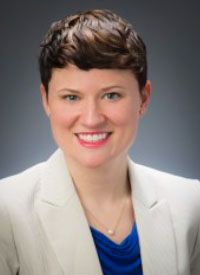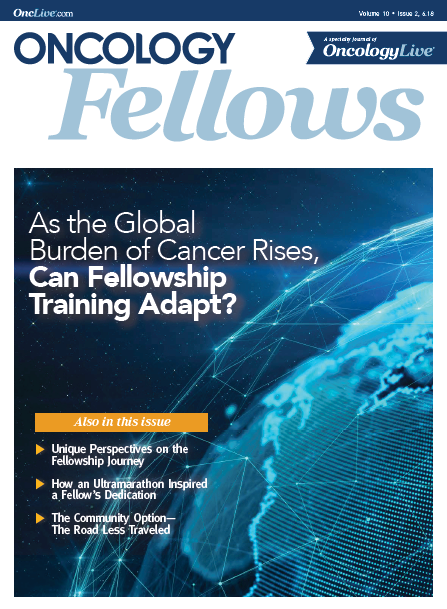Publication
Article
Oncology Fellows
SGO Survey: Higher Levels of Resilience and Flourishing Correlate With Lower Burnout
Author(s):
Symptoms of burnout continue to plague the physician community overall, but a recent survey suggests that factors such as resiliency and the ability to flourish can diminish its detrimental effects.
Monica Hagan Vetter, MD, associate professor of oncology and urology at Johns Hopkins Medicine

Monica Hagan Vetter, MD
Symptoms of burnout continue to plague the physician community overall, but a recent survey suggests that factors such as resiliency and the ability to flourish can diminish its detrimental effects. Members of the Society of Gynecologic Oncology (SGO) reported a 23% rate of burnout, scoring highest on measures of emotional exhaustion (16.9%) and depersonalization (14.8%). However, the survey also revealed several possible factors that protect against burnout. Married participants reported higher flourishing (P = .026) than nonmarried members, and parents reported higher resilience scores (P = .023). Religious affiliation and age were not associated with scores on any inventories.
Lead author Monica Hagan Vetter, MD, a fellow in gynecologic oncology at The Ohio State University in Columbus presented her findings at the OncLive® National Fellows Forum: Gynecologic Oncology meeting in Miami, Florida.
Members of SGO received a cross-sectional electronic survey consisting of 82 questions that measured both burnout and well-being. The investigators distributed the questionnaire via email and reported a 21% (373 of 1745 members) response rate.
Her research is part of an emerging field called positive psychology, a scientific approach to studying human thoughts, feelings, and behavior that focuses on strengths instead of weakness. The goal is to build on the positive in the lives of all people—not just those who struggle with depression—rather than just repair problems.1
Vetter and her colleagues applied measures used in positive psychology to determine their use in future studies.
Low personal achievement scores were reported by 15% of respondents, compared with 11% in a 2013 survey. Respondents who reported high levels of burnout scored significantly lower on both the resilience and flourishing questions compared with those who did not meet the criteria for burnout (P <.0001).
The 2013 survey was only sent to physician members of the SGO with 32% of them reported experiencing signs of burnout. Vetter pointed out that their survey was sent to all healthcare providers of the SGO.
Although the rates for burnout have improved, Vetter said, findings involving the rates of depression and of alcohol and substance abuse were concerning. “About 50% of respondents reported a positive depression screening,” she said. “We found the rate of alcohol abuse was 17%, and the rate of substance abuse was 12%. It was surprising that the secondary measures of burnout and distress were as prevalent as they were.”
From the positive psychology standpoint, the researchers found what they expected—higher levels of flourishing and resilience seemed to correlate with less burnout. “It suggests that these tools can serve as surrogate markers to indicate how we are addressing burnout,” Vetter said.
In response to this and other research, SGO formed the Gynecologic Oncology Wellness Task Force. Its goal is to enhance members’ wellness through focused presentations and courses at the American Society of Clinical Oncology annual meeting.
“I’m advocating for the inclusion of some of the factors identified in our survey, like substance abuse and alcohol abuse, in the curriculum to address the availability of mental health resources,” Vetter said. “People need to know that it’s OK to admit that you’re experiencing distress.” Earlier intervention might prevent substance or alcohol abuse or even suicide, she said.
Although the signs of a downward trend for burnout are encouraging, Vetter said, much work remains to ensure not just SGO members receive help or counseling but also that all physicians are aware of the resources afforded to them. “We know what burnout can do to healthcare professionals, so we want to prevent that from happening in the first place,” she said.
Peterson C. A Primer in Positive Psychology. New York, NY: Oxford University Press; 2006.










